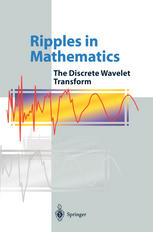

Most ebook files are in PDF format, so you can easily read them using various software such as Foxit Reader or directly on the Google Chrome browser.
Some ebook files are released by publishers in other formats such as .awz, .mobi, .epub, .fb2, etc. You may need to install specific software to read these formats on mobile/PC, such as Calibre.
Please read the tutorial at this link: https://ebookbell.com/faq
We offer FREE conversion to the popular formats you request; however, this may take some time. Therefore, right after payment, please email us, and we will try to provide the service as quickly as possible.
For some exceptional file formats or broken links (if any), please refrain from opening any disputes. Instead, email us first, and we will try to assist within a maximum of 6 hours.
EbookBell Team

5.0
80 reviewsYet another book on wavelets. There are many books on wavelets available, written for readers with different backgrounds. But the topic is becoming ever more important in mainstream signal processing, since the new JPEG2000 standard is based on wavelet techniques. Wavelet techniques are also impor tant in the MPEG-4 standard. So we thought that there might be room for yet another book on wavelets. This one is limited in scope, since it only covers the discrete wavelet trans form, which is central in modern digital signal processing. The presentation is based on the lifting technique discovered by W. Sweldens in 1994. Due to a result by I. Daubechies and W. Sweldens from 1996 this approach covers the same class of discrete wavelet transforms as the one based on two channel filter banks with perfect reconstruction. The goal of this book is to enable readers, with modest backgrounds in mathematics, signal analysis, and programming, to understand wavelet based techniques in signal analysis, and perhaps to enable them to apply such methods to real world problems. The book started as a set of lecture notes, written in Danish, for a group of teachers of signal analysis at Danish Engineering Colleges. The material has also been presented to groups of engineers working in industry, and used in mathematics courses at Aalborg University.